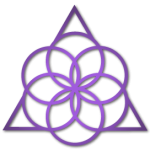An old professor once said, “the one single thing that makes me optimistic, rather than cynical and pessimistic, are my students.” This rings true for me particularly in how I feel about our Chinese and Japanese Bowspring students, who recently attended trainings with me and Desi in Xi’an, China and in Tokyo, Japan.
Xi’an, China
This last 25-hour training in the basics of the Bowspring™ method in Xi’an was mostly comprised of first year students finishing their third segment of a 75-hour training to learn how to competently perform and teach the Seed Kata to other beginners.
In all, we shared with 90+ dedicated students (all women ages 23 – 69, except 3 men in their 30’s), who have worked diligently over the past year with their Bowspring katas to make impressive progress in their practice. Watching the Chinese students face their challenges with inner strength to improve so much in the Bowspring method over 3 trainings is very inspiring.
When we first showed the Chinese yoga students the Bowspring in 2017, they were challenged to become softer and more refined with their physical sensitivity to be able to do the simplest katas without too much force. In general, Chinese students tend to more Yang than Yin in their actions, so they will tend to overwork and push hard in their yoga practices. In past trainings, when the students would work together in partner exercises, they would often be too rough and forceful with their hands-on adjustments. It was not uncommon to hear someone yell out in pain from an overly vigorous adjustment and then later to show red marks or bruising where they were adjusted!
The Chinese students certainly don’t lack the inner willpower to accomplish something fully. Yet, without increased sensitivity through refined use of breath and alignment technique, this forceful energy is often misdirected and can result in injury from their yoga practice. Also, a tough physical outer shell that lacks refined sensitivity can block the ability to feel and to be aware of the deeper revelations of Self-knowledge, which is the fruit of yogic discipline.
Fortunately, Teacher Yali, who is one of the most experienced and leading yoga teachers in China, has been guiding her students in the past year to turn their attention to slowing down their postural flows, and to cultivate more balanced Yin energy in their Bowspring practice. After a year of regular practice, the Chinese Bowspring students are now much softer and mindful with their hands and feet in the simplest functional movements – walking, kneeling, and touching the floor. There has been significant development in their capacity to consciously make their hands and feet more Yin – the top of the toes and fingers softly curved downward, and the center of the palms and the middle of the arches more deeply hollowed underneath and more rounded on top. Over the last 3 trainings in China, the students markedly improved each time in their mindfulness, sensitivity, and balancing their outer Bowspring alignment.
By applying a high level of attention to the subtleties of basic movements and alignment in a variety of Level 1 Bowspring poses, these yoga teachers in China have dramatically shifted in more than just their outer physical alignment and form. Over the years when I taught yoga teacher trainings in China, one of the highest priorities for the trainees was making money and becoming popular by teaching mainstream yoga. This is exactly what many students told us was their intention for taking yoga trainings when we first brought Bowspring to China in 2017.
Now a year later, this group of Chinese teachers is instead prioritizing increasing self-awareness in not only their yoga practice, but in their lives. Instead of choosing to further propagate mainstream cultural trappings of yoga which overvalue entertainment, stretching for comfort and pleasure, and having fun while moving mindlessly to up-tempo dance playlists, there are growing numbers of yoga teachers who wish to go deeper with their postural alignment practice to cultivate long-term health, higher levels of consciousness and spiritual wisdom. It is a very positive sign in the yoga world to see so many Chinese students choosing a long-term, yet more challenging path toward health and happiness over the easier, short-term, superficial mainstream yoga styles.
Many students shared with us that they are deeply dissatisfied with living life in a superficial way – doing only what is easy and popular, a comfortable life where the dogmas and the myths of the mainstream are blindly accepted without question. They openly share about their personal challenges of not fitting into the mainstream yoga world, particularly in terms of aligning the poses in straight lines and stretching passively in relaxed, static ways. They express their longing to to be free of their fears and feelings of lack which bind them to stick with the status quo and not question the popular narrative. There is consensus among the Chinese students that the Bowspring practice fans the flames of their courage to change their lives for the positive. They feel emboldened to rise against the declining flow of mainstream culture which many times disconnects them from what is balanced and whole. With the Bowspring practice, the choice is for what is natural instead of what is normal, and this is what more and more Chinese yoga teachers are fortunately choosing.

